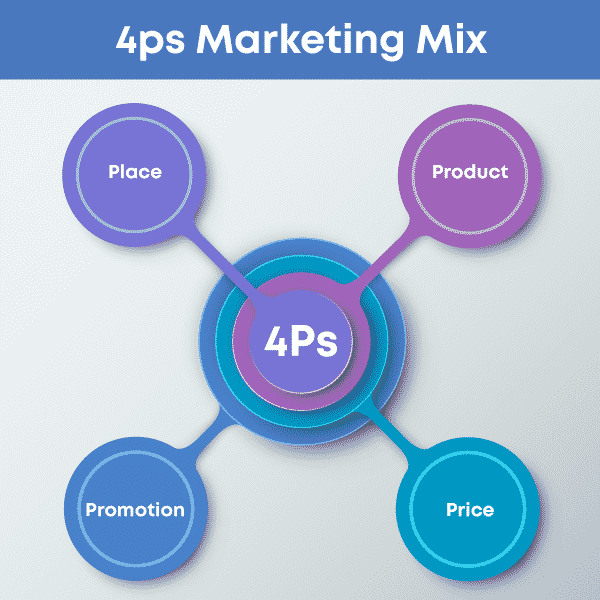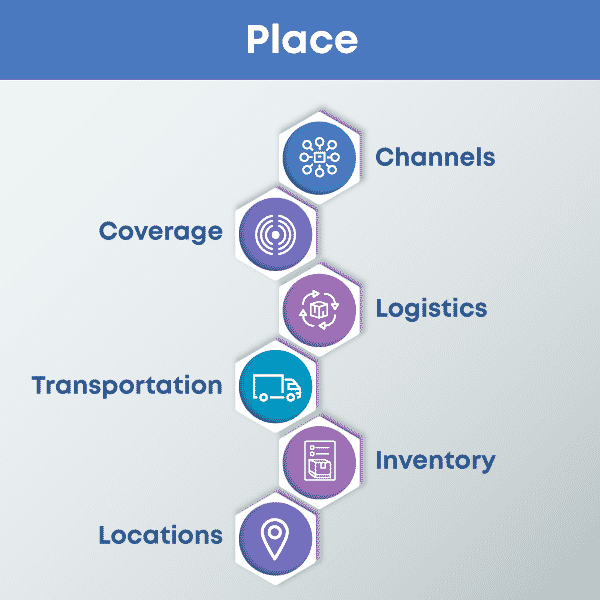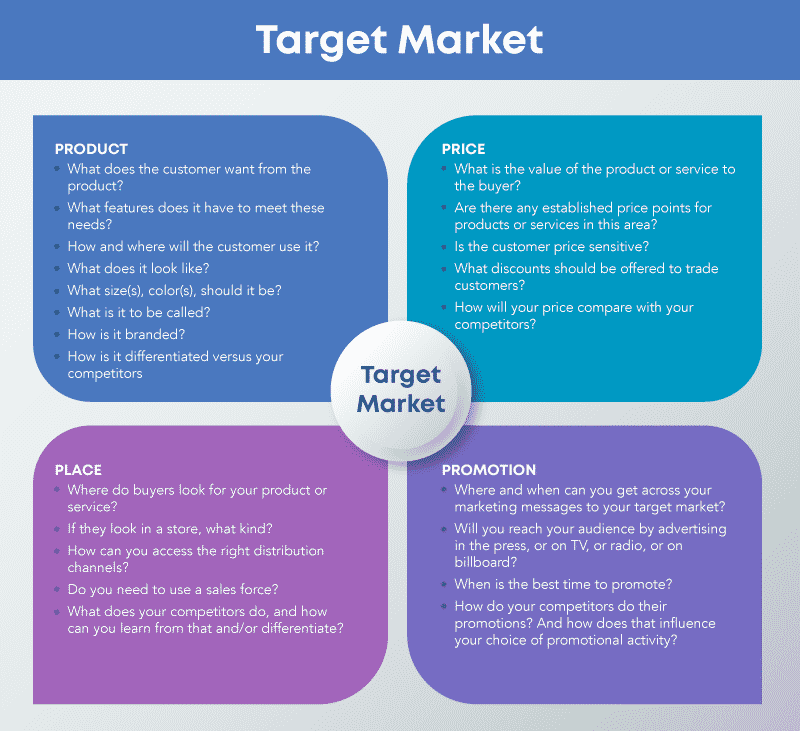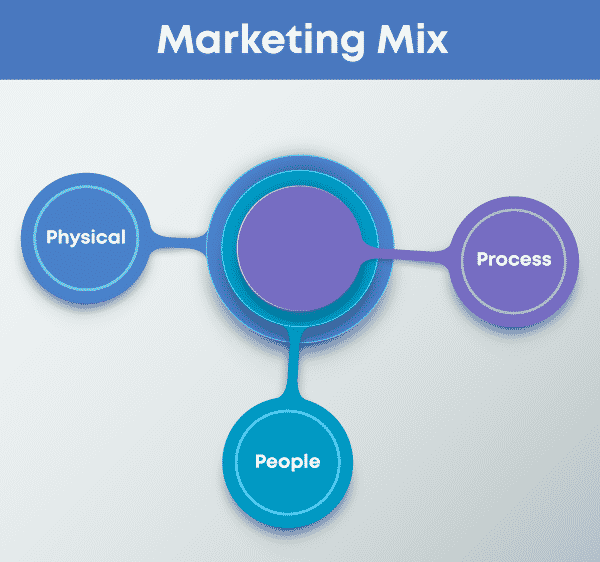
Marketing mix is a foundation model in marketing that helps business organizations in adapting effective marketing strategies. It can be described as the combination of marketing tools that are utilised by any firm in order to pursue its marketing-related objectives in the targets. Globalization has brought significant changes in business environments and business organizations have to bring necessary changes in their marketing strategies to cope with the competitive world. Effective management of marketing mix enables marketers in managing an organization’s budget to achieve its anticipated objectives. In this article, the important aspects of the marketing mix are going to be discussed with a brief description of how the marketing mix helps marketers.
What is Marketing Mix?
Marketing experts apply marketing mix strategies through management of factors like product, distribution, pricing and promotion to attain the target markets. The marketing mix, on the other hand, refers to a combination of effective actions or tactics that a company utilizes in order to promote its products and services in the market. Marketing mix contains numerous areas of importance as part of an inclusive marketing plan. Marketing Mix combines several aspects of business and marketers need to keep in mind all those models to adopt an effective marketing strategy to gain the attention of targeted customers towards a product or service.
Aspects of Marketing Mix?
The 4Ps classification related to the marketing mix that is often considered to be synonymous with the marketing mix has been popularized by J. McCarthy since 1960. McCarthy first mentioned the 4P model of the marketing mix in his Basic Marketing- A Managerial Approach and this model. The approaches of marketing managers may vary depending on the industry as well as the target of the marketing plan. Still, the 4P model is taken into consideration while deciding marketing plans that will influence the targeted customers.

Product in Marketing Mix
The product can be regarded as the most vital aspect of the marketing mix as the product represents that item or service meant to satisfy the requirements and wants of the customers. Business organizations need to identify the demands of their targeted customers so that they can bring necessary changes in their products or services to satisfy customers with improved quality. Most importantly, business organizations should make their customers understand why their products are better than their competitors. Effective product marketing is the key to the success of any company and the company, therefore, requires to improve the quality of products to gain customers’ satisfaction as well as a competitive advantage.
Learn more about: Digital Marketing Career Paths, and Salary Trends.
Price in Marketing Mix
Price is one of the most significant parts in case of a marketing mix as it refers to the exact financial denominations that the consumers are to pay in order to avail a product or service from a company. Sales of particular products or services of the company depends on the price that has been assigned to it. The supposed value of a product appears to be more important than neutral costing of that product on offer to the customers. If a product costs lower or higher than its assumed value, it will not sell. Therefore, a business organization should pay attention to what customers are thinking about the product that the business organization is selling. If there is a positive customer value, be sure that the product can be successfully priced higher than its objective monetary value. On the other hand, while the product has little value to the consumers, the product cannot be underpriced to sell. Value chain costs, plans of distribution, markups and how rival products are priced by competitors- all these play an effective role in pricing policy.
Place
Place as an aspect of the marketing mix indicates how the product is going to be provided to the targeted customers. Distribution is considered to be a significant element of placement. Placement strategy helps marketers to make decisions regarding the effectiveness of a distribution channel to marketers. How a product is received by end users, must be taken into consideration while adopting a product strategy for marketing a product or service.

Promotion in Marketing Mix
Promotion is another significant element as it allows to raise consumer awareness for services and products and leads to higher sales for building brand loyalty. Promotion as a weapon of marketing mix helps in the dissemination of related information and affects purchase decisions of the consumers. Techniques and strategies associated with marketing communication come under promotion. Promotion includes advertising, sales promotion, public relations, along with special offers. Whatever channel a company is using for promoting of its products or services, the channel requires to be appropriate for the product, price of that product as well as end users to whom the product is being marketed. Management of business organisations need to be sharp and attentive so that they are able to assess the difference between marketing and promotion. Promotion is a much more communicative aspect where consumer engagement becomes the prime factor taken into consideration.

Apart from the 4P model, the 7P model of marketing mix has been introduced by Booms and Bitner in 1981 with a need to upgrade the traditional concept of marketing mix with time. The extended marketing mix includes the following factors:
People
People indicate those who share the responsibility of a company’s well-being from sales staff to managing directors. Involving the right people appears to be important as all of them need to contribute to your business.
Processes
The processes related to the delivery of your products or services are significant to your customers.
Physical Evidence
Although services are intangible, companies need to provide their customers with receipt or invoice of the service as proof which is considered to be physical evidence. Physical evidence is offered to assure customers about the authenticity of the services so that customers can contact the company in the future to let them know the problems related to the services.

All these aspects of the marketing mix serve as a great room to begin planning for or to assess an prevailing product offering in order to enhance the quality of the product to gain customer satisfaction to a great extent.
Read the Top 7 Digital Marketing Books for Beginners.
Key Features of Marketing Mix
The main features of the marketing mix are as follows:
- Marketing mix comprises four unique variables that are independent. In spite of the four variables being independent of each other, they are in close links and leave an impact on each other in a market.
- Using this set of four unique variables, a business organization can accomplish its marketing targets like profits, sales, consumer satisfaction, and retention.
- Marketing mix as a flexible concept focuses on each of its variables that can be increased or decreased given customers’ needs and effective marketing conditions.

- Business organizations need to keep a look at the changing requirements and recent trends within the organizations and in the market in order to confirm if those elements of marketing mix remain applicable and updated with the flow of time.
- The sole responsibility of monitoring marketing mix should lie on an experienced, intelligent and innovative marketing manager who will achieve expected results through the skill manipulations of variables related to the marketing mix.
- Customers should always be at the pivotal point of activity associated with the marketing mix. Product’s value needs to be determined according to the customers’ perceptions and the goal of any business organization must be the achievement of customers’ loyalty and satisfaction.
Key Challenges in Marketing Mix
Over the years, marketing managers of different business organizations have faced an issue that the conventional model of marketing mix comes with limitations for being structured. The challenges that marketing managers often face is given below with the probable solution:
- The traditional model of marketing mix inclines to be applicable to tangible products. Services despite being intangible need to be offered to customers after effective planning as done in case of physical products. In order to overcome the challenges related to services or other intangible products, 3 additional categories have been included in the 4P model to form the 7P model which is more effective.
- Lack of true customer focus is another problematic issue that led Robert F. Lauterborn to introduce a customer-centric four Cs categorization in 1990. The four Cs include:
- Product to customer resolution
- Place to customer suitability
- Promotion to customer communication
- Price to customer cost
How to Develop Marketing Mix
Know how you can develop your marketing mix from the following steps:
- At first, a unique selling proposition needs to be decided through surveys on customers to identify how USP will work.
- The next step requires identifying and understanding the potential customers to whom you will offer your products or services.
- You need to analyze the competitive market in order to know prices and associated benefits like special offers, discounts, warranties offered by your competitors.
- Where are your customers most likely to buy a product? Your marketing manager requires you to assess placement options to identify the right place for promotion.
- Communication strategies need to be developed as effective ones for the successful promotion of products.
The vitality of the marketing mix for adopting the right marketing strategies cannot be denied. Therefore, business organizations need to take the help of 4Ps or 7Ps marketing mix models to reach their customers whose satisfaction is the only aim of the business.
If you want to ensure that your marketing strategy is aligned to the needs of the digital market, upskill with a PG Program in Digital Marketing.






